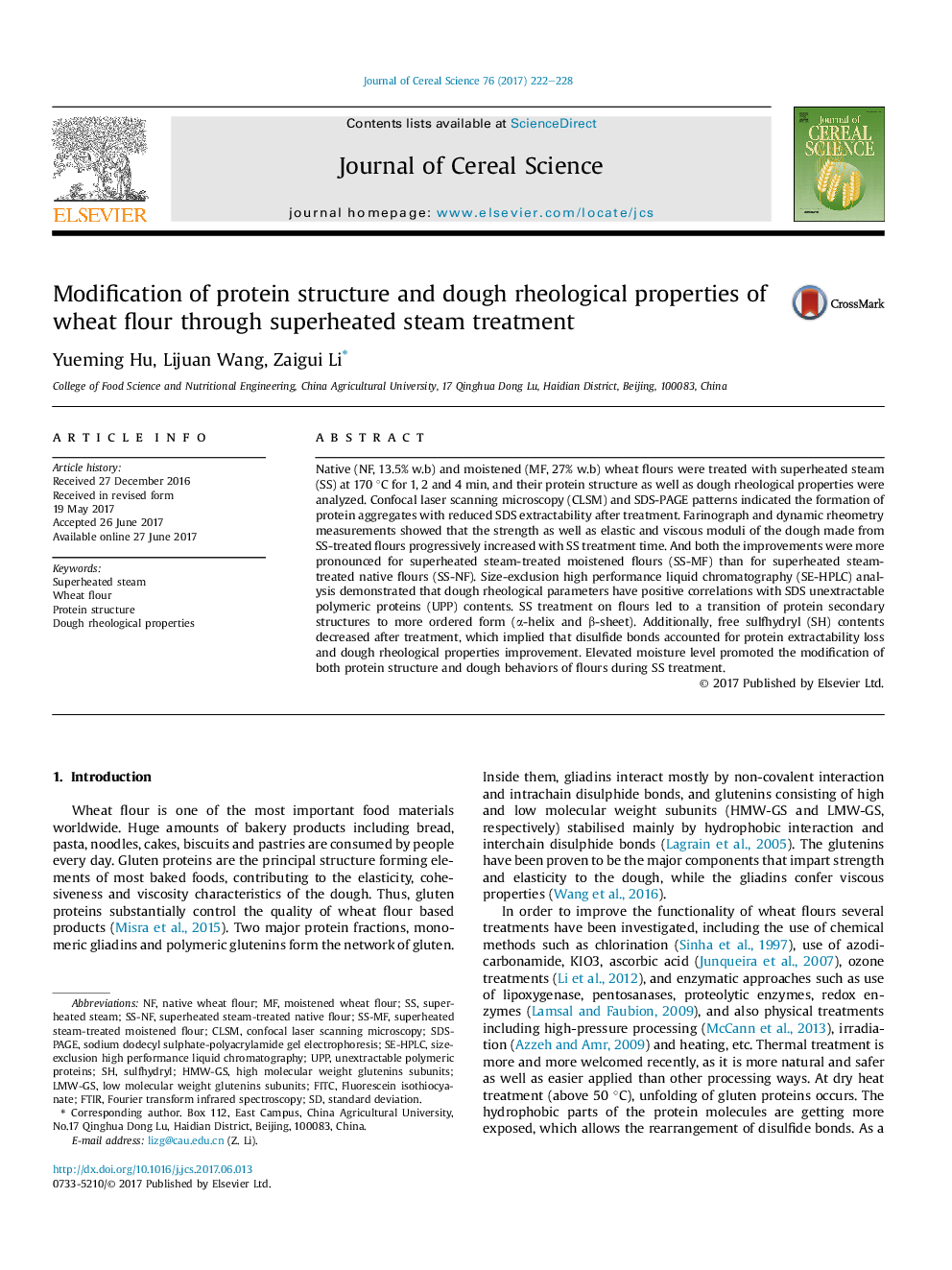| Article ID | Journal | Published Year | Pages | File Type |
|---|---|---|---|---|
| 5762332 | Journal of Cereal Science | 2017 | 7 Pages |
Abstract
Native (NF, 13.5% w.b) and moistened (MF, 27% w.b) wheat flours were treated with superheated steam (SS) at 170 °C for 1, 2 and 4 min, and their protein structure as well as dough rheological properties were analyzed. Confocal laser scanning microscopy (CLSM) and SDS-PAGE patterns indicated the formation of protein aggregates with reduced SDS extractability after treatment. Farinograph and dynamic rheometry measurements showed that the strength as well as elastic and viscous moduli of the dough made from SS-treated flours progressively increased with SS treatment time. And both the improvements were more pronounced for superheated steam-treated moistened flours (SS-MF) than for superheated steam-treated native flours (SS-NF). Size-exclusion high performance liquid chromatography (SE-HPLC) analysis demonstrated that dough rheological parameters have positive correlations with SDS unextractable polymeric proteins (UPP) contents. SS treatment on flours led to a transition of protein secondary structures to more ordered form (α-helix and β-sheet). Additionally, free sulfhydryl (SH) contents decreased after treatment, which implied that disulfide bonds accounted for protein extractability loss and dough rheological properties improvement. Elevated moisture level promoted the modification of both protein structure and dough behaviors of flours during SS treatment.
Keywords
FITCCLSMUnextractable polymeric proteinsSE-HPLCLMW-GSHMW-GSWheat floursodium dodecyl sulphate-polyacrylamide gel electrophoresisSDS-PAGEstandard deviationsize-exclusion high performance liquid chromatographyUpPSuperheated steamDough rheological propertiesProtein structuresulfhydrylFTIRFourier transform infrared spectroscopyfluorescein isothiocyanateconfocal laser scanning microscopy
Related Topics
Life Sciences
Agricultural and Biological Sciences
Agronomy and Crop Science
Authors
Yueming Hu, Lijuan Wang, Zaigui Li,
